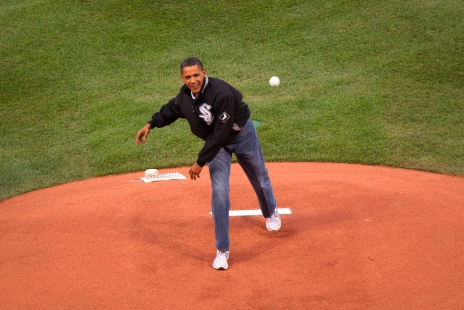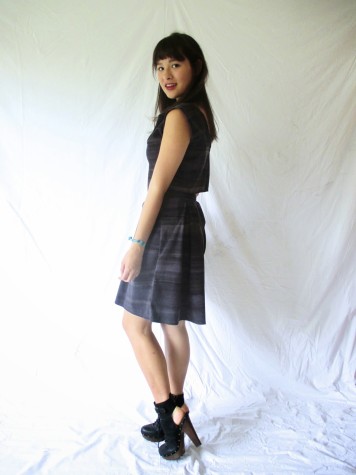Commander-in-chief’s fashion style a first, or a flub?
Barack Obama, president of the United States of America, leader of the free world, has been seen – gasp – sporting “mom jeans” at various sporting events. Mom jeans are widely mocked for being high-waisted, ill-fitting, and unbecoming on almost anyone who wears them.

Obama’s fashion in turn helped to coin the term “dad jeans.” He has been applauded by GQ, mocked by former Republican Vice Presidential candidate Sarah Palin, and admonished by Meredith Vieira on the “Today” show. Only recently did Obama admit that his wife, Michelle Obama, had “retired” those jeans from his closet.
What does it mean when the commander-in-chief is seen in pants that are unflattering, unfashionable, and embarrassing?
“His style is hilarious, and…as long as he doesn’t wear it to official president (events), it’s fine,” said Charlotte Deanda (’15). “It makes him more dad-y and relatable,” she added.
GQ commended his jeans, referring to his style decision in a March 2014 article as on the forefront of a fresh new fashion trend – a “normcore practitioner”.
Normcore, as defined by The New York Times in an April 2014 article, is “a fashion movement … in which scruffy young urbanites swear off the tired street-style clichés of the last decade — skinny jeans, wallet chains, flannel shirts — in favor of a less-ironic (but still pretty ironic) embrace of bland, suburban anti-fashion attire.”
K-HOLE, a trend-forecasting group based in New York, coined the term “normcore”, has described it as seeking “the freedom that comes with non-exclusivity.”
The New York Times mentioned in the same article Timberlands, flannel shirts, boyfriend jeans, Birkenstocks, and Teva sandals as normcore attire. New York magazine lists New Balance sneakers, Patagonia windbreakers and fleeces; khakis, nurse’s clogs and souvenir stand baseball caps, as evidence of normcore infiltrating everyday wear.
Urban students, both male and female, wear Timberlands, Patagonia jackets, clogs, and flannel shirts – but are they doing so to be a part of the normcore movement?
“Urban kids aren’t conscious of it, and aren’t purposefully choosing their clothing based off of the trend,” thinks an Urban student. This student doesn’t see normcore present at Urban, even though many Urban students sport what have been called normcore apparel.
However, it is obvious that Urban students have a very distinct style.
Kendall McCready (’16) and Jenny Assaf (’16), both members of Urban’s now-defunct Fashion club, agree that Urban students have a very unique style.
“Urban has a lot more laid-back fashion…there’s a look to Urban girls that’s very cool and minimal,” said McCready, an aspiring fashion designer who makes the majority of her own clothes.

“At Urban most people wear stuff for themselves,” Assaf said.
Assaf also describes Urban fashion as “similar” but is rarely what she describes as the homogenous “Brandy Melville shirts, skirts, everything” that she sees present at other schools.
Check out the Legend’s first ever magazine, The Yeti, for more on Urban trends.

